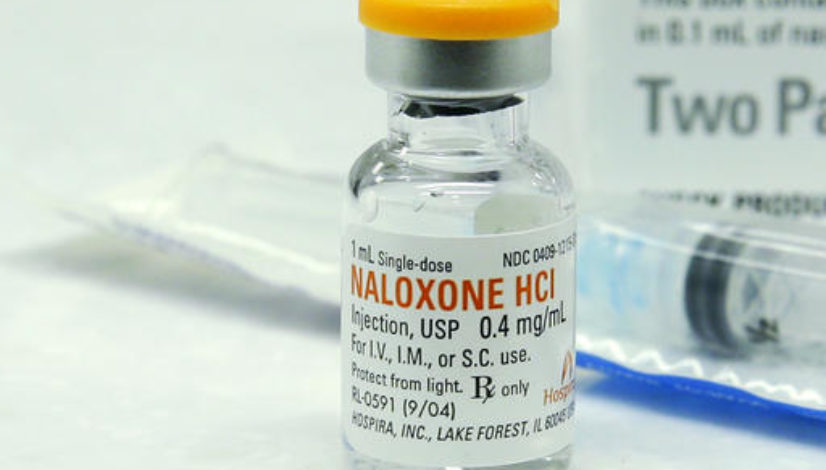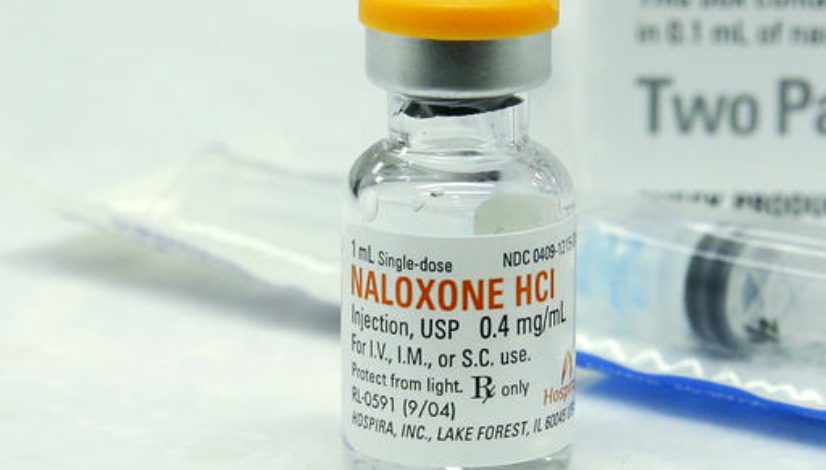Surviving an opioid overdose may depend on what your local police decide

Published: Sep 14, 2017, 7:59 am • Updated: Sep 14, 2017, 7:59 am
By John Tozzi and Jared S Hopkins, Bloomberg
In southwest Ohio, people die from drug overdoses at more than double the national rate. In the future, whether someone survives could hinge on what county they are in.
The sheriff in Butler County this summer declared that his officers wouldn’t carry medication to reverse overdoses. In Middletown, a city of 49,000 that overlaps the county, a council member frustrated by ballooning costs went even further, suggesting ambulance crews shouldn’t have to save the lives of some people who have been revived before.
In neighboring Hamilton County, which includes Cincinnati, officials are taking the opposite approach. They want to create the Narcan capital of America, putting more than 30,000 doses of the opioid-overdose reversal spray in the hands of Ohioans ready to use it. That’s about one for every 27 residents. In addition to police, firefighters, and medics who already carry the drug, Hamilton County plans to distribute Narcan to syringe exchanges, houses of worship-and maybe even employers. People discharged from hospitals or jails after opioid incidents should leave with “Narcan on the belt,” says Tim Ingram, Hamilton County’s health commissioner.
The contrast between these approaches mirrors the national debate over how to deal with a drug crisis that killed 33,000 Americans in 2015, a tally expected to increase. The epidemic began years ago as doctors started to liberally prescribe opioid painkillers such as oxycodone. As addiction and abuse rose, the medical industry began to tighten access, drivng up street prices. Drug cartels saw an opportunity and flooded U.S. cities with cheap heroin, a common substitute.
Nowadays, heroin is often laced with such potent synthetic drugs as fentanyl or the elephant tranquilizer carfentanil, which can be deadly in minuscule doses. As drug poisonings keep rising, communities have to decide how easy it should be for people who overdose to get life-saving medicines-and at what cost.
Forty-five states and the District of Columbia allow naloxone, the active chemical in Narcan spray, to be obtained without a prescription. Naloxone isn’t addictive and doesn’t induce a high, so it can’t be abused. President Donald Trump’s opioid commission urged in a July draft report that “Naloxone be in the hands of every law enforcement officer” and suggested doctors also prescribe it in tandem with risky painkillers. Between 1996 and 2014, naloxone dispensed by “laypersons”-including drug users, family members, and other bystanders-reversed at least 26,000 overdoses, the Centers for Diseases Control has reported.
Related stories
- Sessions: “We must create and foster a culture that’s hostile to drug use”
- To solve the opioid crisis, go after Big Pharma, not drug users
- Will Canada’s cannabis legalization alleviate the country’s opioid crisis?
- Trump’s blame of Obama for opioid epidemic included skewed weed stats
- Could Trump’s declaration of opioids as national emergency be used for Sessions’ war on drugs?
Raising awareness about naloxone has “been a struggle,” says Reilly Glasgow, project manager at the Lower East Side Harm Reduction Center in New York City. The nonprofit provides syringe exchange, counseling, and other services to people suffering from addiction. The group hands out free naloxone kits at 800 training sessions each year. “To me, it’s criminal to let this sit on the shelf,” Glasgow says.
Dan Picard, the Middletown, Ohio, council member who proposed limiting naloxone for repeat overdoses, stands on the opposite side of the divide. Picard says drug poisonings in Middletown have dropped since his suggestion made national headlines in June. “Every overdose run costs the city $1,104,” Picard says, adding that Middletown had been on track to spend 10 times the $10,000 it budgeted for Narcan.
“My comments scared people,” he contends. “At some point in life people need to have some personal responsibility.”
Butler County Sheriff Richard Jones says people can get Narcan at pharmacies or from paramedics, but his officers won’t carry it. “Everything’s being spent on the treatment of the addict,” he says, adding that more money should go to prevention and school programs to discourage drug use, citing the DARE program and the “Just Say No” campaign Nancy Reagan championed. “I’m here on the front lines, and people are fed up with this. I had a guy call me the other day saying, ‘I don’t get free insulin.’”
Last year Butler County recorded 211 fatal drug overdoses, and the death rate is among the highest in Ohio.
Jones says he’s not aware of anyone who died because his officers didn’t have naloxone, and he notes that medics usually arrive at the same time as police. Picard says Middletown does plenty to get people into treatment, including sending response teams the day after overdoses to follow up.
Withholding emergency treatment after an overdose would violate medical ethics, says Andrew Aronsohn, a doctor and faculty member at the MacLean Center for Clinical Medical Ethics at the University of Chicago Medical Center. Addiction carries a particular stigma, but society rarely questions whether other medical conditions resulting from personal behavior deserve treatment, from a smokers’ lung cancer or a drunk drivers’ injuries after a crash, he says. “When someone’s dying in front of you, that’s not really our place to judge all of those things as medical providers,” Aronsohn says. “This is pretty egregious to think that you would just deny people care that would save their lives.”
Mike DeWine, Ohio’s Republican attorney general, is currently suing prescription opioid manufacturers, alleging that they downplayed addiction risks. He says that, while he understands why some officials are exasperated with reviving people who may overdose again, they should do it anyway. “You’ve got law enforcement officers who are doing things that five years ago none of them ever would have dreamed they’d be doing-but it’s the right thing to do,” says DeWine, a former U.S. senator who is also running for governor. The epidemic requires both public health and law enforcement solutions, he says, such as drug courts and programs in which police help connect people to treatment.
Researchers at the University of Cincinnati will track the Hamilton County experiment to see what effect it has on deadly overdoses. “If you really put an emphasis on nalaxone and put it out there everywhere, how many lives will you be able to save?” DeWine says. Hamilton County’s five hospitals as well as other providers and community groups pledged $550,000 in cash, including $25,000 from the county, to fund the program for the next two years.
That funding doesn’t cover the cost of 25,000 doses of Narcan that manufacturer Adapt Pharma will donate. Hamilton County has already distributed 7,000 of doses of naloxone over the past two years, mostly through emergency responders. Narcan can be delivered without training and is already available at pharmacies in almost every state, usually on “standing order,” meaning people can get it without a prescription. Mike Kelly, who runs U.S. operations for Adapt, says public awareness is the biggest barrier to more widespread use. New York and Massachusetts are doing public ad campaigns to alert people that naloxone is available at pharmacies.
If the Hamilton County program reduces deaths, he says, “this could be a blueprint for what other communities need to do.” A successful demonstration could also broaden the market for Narcan, providing a commercial opportunity for closely held Adapt. Narcan prescriptions have increased to 530,000 doses so far in 2017, up from 229,000 doses in all of 2016, according to data from Symphony Health Solutions that was compiled by Bloomberg Intelligence.
Other Ohio counties support expanding Narcan availability. On the other side of the state, police in Lorraine County averted 350 fatal overdoses over the past four years using naloxone, says Detective Gregg Mehling of the county’s drug task force. Medics have saved many more. “If this guy’s going to live another day, it’s in your hands,” he says. Mehling supports having Narcan in schools and workplaces, alongside fire extinguishers and automated defibrillators. “You hope you never use them.”
Last year, Lorraine County had 146 drug overdose deaths-double the rate in recent years. Mehling says that, without Narcan, the numbers would be “two or three times worse.”
No one thinks Narcan alone is sufficient. While making it more widely available is a “no brainer,” the U.S. needs a greater focus on prevention and access to treatment, says Andrew Kolodny, executive director of Physicians for Responsible Opioid Prescribing and a researcher at Brandeis University. People with addiction should find it easier to “access treatment than heroin,” he says. “That person should be able to walk into a treatment facility regardless of the ability to pay.”
Ingram, the Hamilton County health commissioner, agrees that people need treatment, counseling, and social support to beat addiction. While treatment facility capacity is expanding, there still aren’t enough beds. Making Narcan more widely available, he says, will at least keep people out of the morgue.
Topics: Ohio, opioid epidemic, opioids, overdose, police




